Traveling in the footsteps of St. Dominic through Spain and France
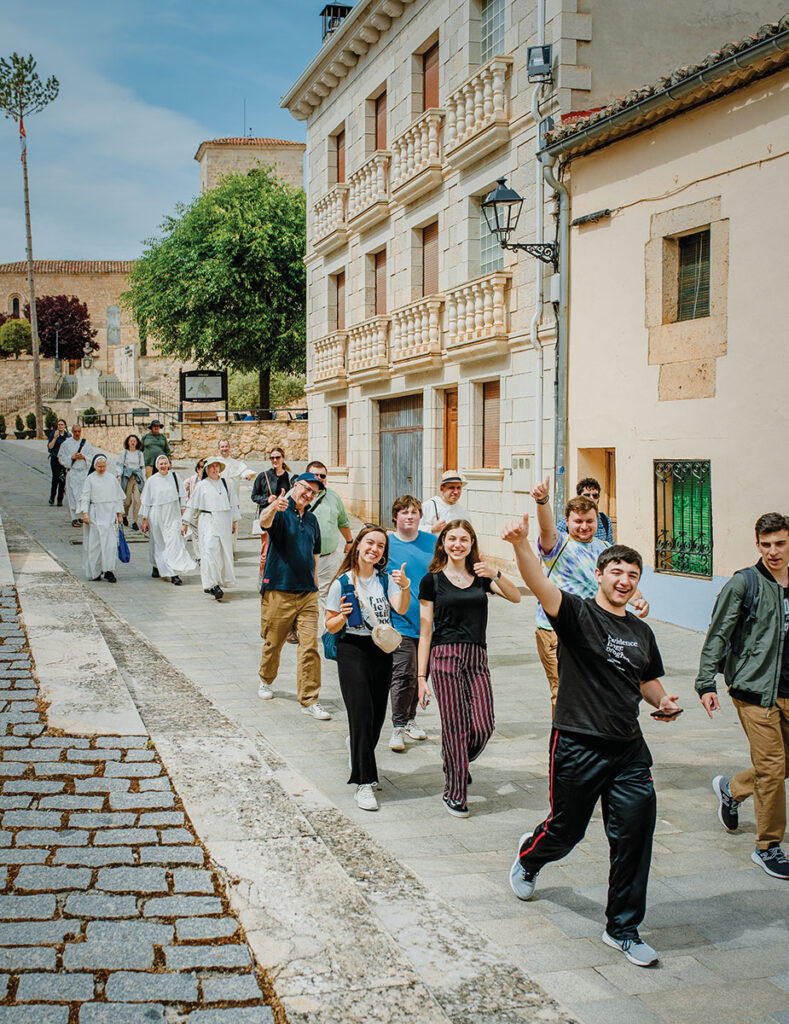
By Michael Hagan ’15, 19G
A pilgrimage is a journey from one home toward a home of a different kind. The pilgrim is called to a place of personal or shared significance. The Red Sox fan journeys to Fenway Park, the hiker treks the Appalachian Trail, a family visits its ancestral land. The believer sojourns toward God.
In a first-of-its-kind experience at Providence College, 19 students and young alumni (including two seminarians), accompanied by four Dominican priests, three Dominican sisters, and a faculty member, traveled in the footsteps of Saint Dominic through Spain and France on an 11-day pilgrimage in May and June. Sponsored by Campus Ministry and open to all members of the college community, the pilgrimage brought the travelers to Dominic’s birthplace and other locations significant to his life.
In 1216, Dominic de Guzman (1170-1221) founded the Order of Preachers, the religious order which established and administers PC. Today there are more than 5,500 Dominican friars around the world.
“The pilgrimage is a way to better know and love Saint Dominic through an immersion into his origin story,” said College Chaplain Rev. Justin Bolger, O.P. “There are many joys and graces to receive in any pilgrimage, but the hope is that walking in the footsteps of Saint Dominic inspires a greater love of him and our beloved Dominican school.”
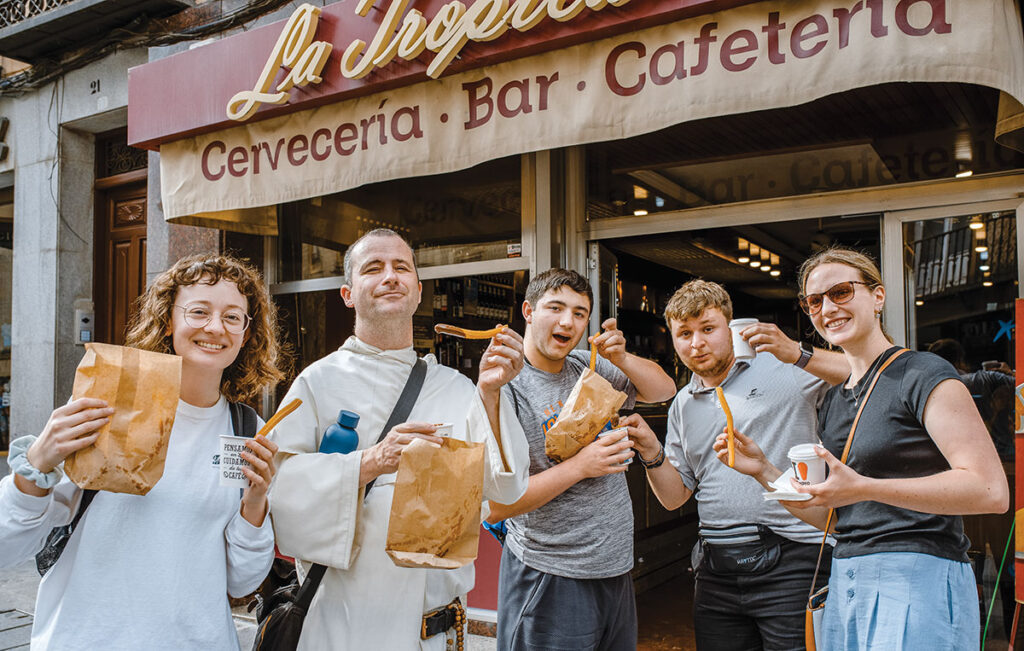
The sun shone as the pilgrims left campus by bus for Boston Logan International Airport and an ambitious, arduous journey. After an overnight flight across six time zones, they arrived in Madrid for a passport check at mid-day with no plans for rest until after a late dinner that night in their hotel. Transported by bus throughout the pilgrimage, they still logged an average of 16,000 steps daily on foot. They slept in religious houses and modest hotels, and they prayed the Divine Office several times a day using an app on their smart phones.
In Segovia, 60 miles north of Madrid, the Friar pilgrims emerged from their bus into the shadow of an ancient Roman aqueduct. Built in the first century A.D., it brought water from mountain springs 11 miles away to the city until 1973. Segovia is the location of a cave where Dominic prayed for others and self-administered harsh physical penances through long nights in the city where he preached by day. The hollow in the rocky hillside is now a gilded chapel with a sculpture of Dominic in penance before the crucified Christ behind the altar.
The pilgrims studied the dimly lit space as they awaited Mass celebrated by Father Justin; Rev. Irenaeus Dunlevy, O.P., assistant chaplain; and assistant professors of theology Rev. Isaac Morales, O.P. and Rev. Dominic Verner, O.P. Assisting were two seminary students from the dioceses of Providence and Manchester, Adam Habershaw ’23 and Spencer Gregory ’24.
In his homily, Father Dominic explained that Christian pilgrimage originated as a penitential practice. While the Friar pilgrims may not be called to penances as grueling as Dominic’s (“Though it worked for him; he is a saint, after all,” Father Dominic said), the early mornings, many miles on foot, and other challenges ahead were opportunities to embrace a penitent spirit.
After Mass and reflection came a walking tour of the old city and its cathedral, an impromptu stop for chocolate-dipped churros that a patron promised “will change your lives,” and finally, dinner and sleep after more than 24 hours of travel.
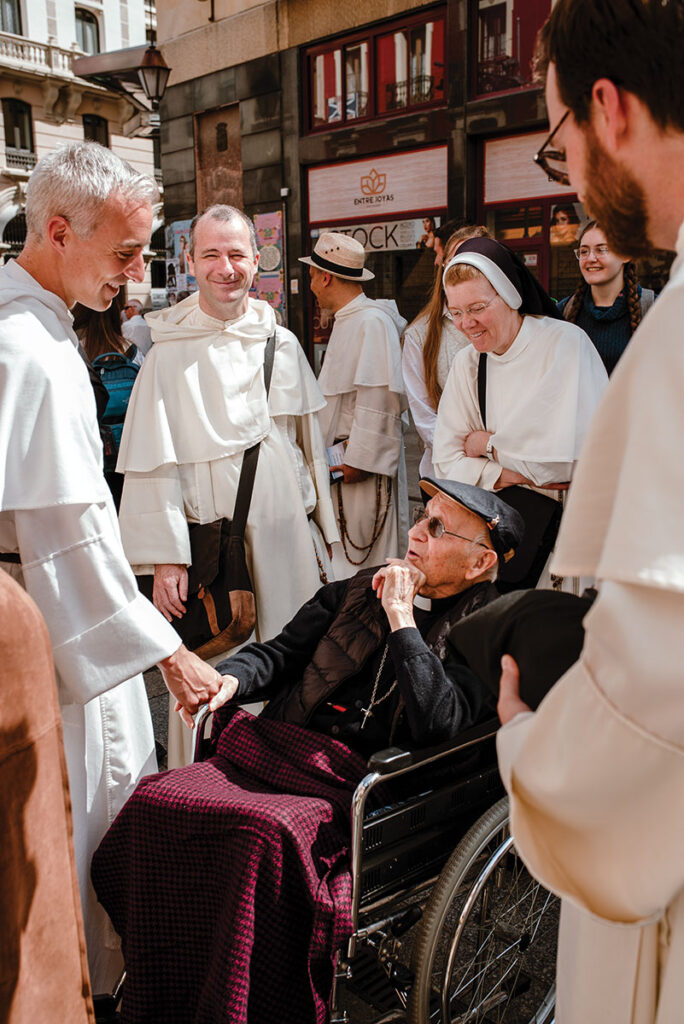
The next days were spent exploring sites of Dominic’s childhood and youth. In Palencia, where Dominic studied, an elderly man in clerical garb, being pushed in a wheelchair, noticed the friars and sisters and gestured toward them. A 96-year-old Carmelite friar, he then blessed the pilgrims and asked them to pray for him as they traveled.
While Dominic was a student, famine afflicted the region. Moved with compassion, he is said to have sold his books and used the money to feed the hungry. Hand lettered on parchment made from animal skins, these volumes were already valuable. Annotated in Dominic’s hand, they were the irreplaceable tangible records of innumerable hours of study.
“I will not study on dead skins when living skins are dying of hunger,” Dominic said.
From Palencia the pilgrims traveled 70 miles to Caleruega, Dominic’s birthplace. As they approached the small town, the multilane highway dwindled to a two-lane road. Rolling hills were painted red with poppies. Every several miles, the route wound through small villages comprised of houses and shops densely arranged around old churches.
Caleruega is built into a hillside. Over it stands a stone watchtower that belonged to Dominic’s family. The village is home to a house of Dominican friars, a monastery of Dominican nuns, and two cafés. Beneath a 16th century church adjacent to the nuns’ monastery is a crypt chapel with a well that is said to mark the exact location of Dominic’s birth. The Friar pilgrims, following custom, drank from the well; the water was cold with a slight mineral taste. Behind the crypt’s altar, mosaics depicted Dominic’s nine ways, or postures, of prayer.
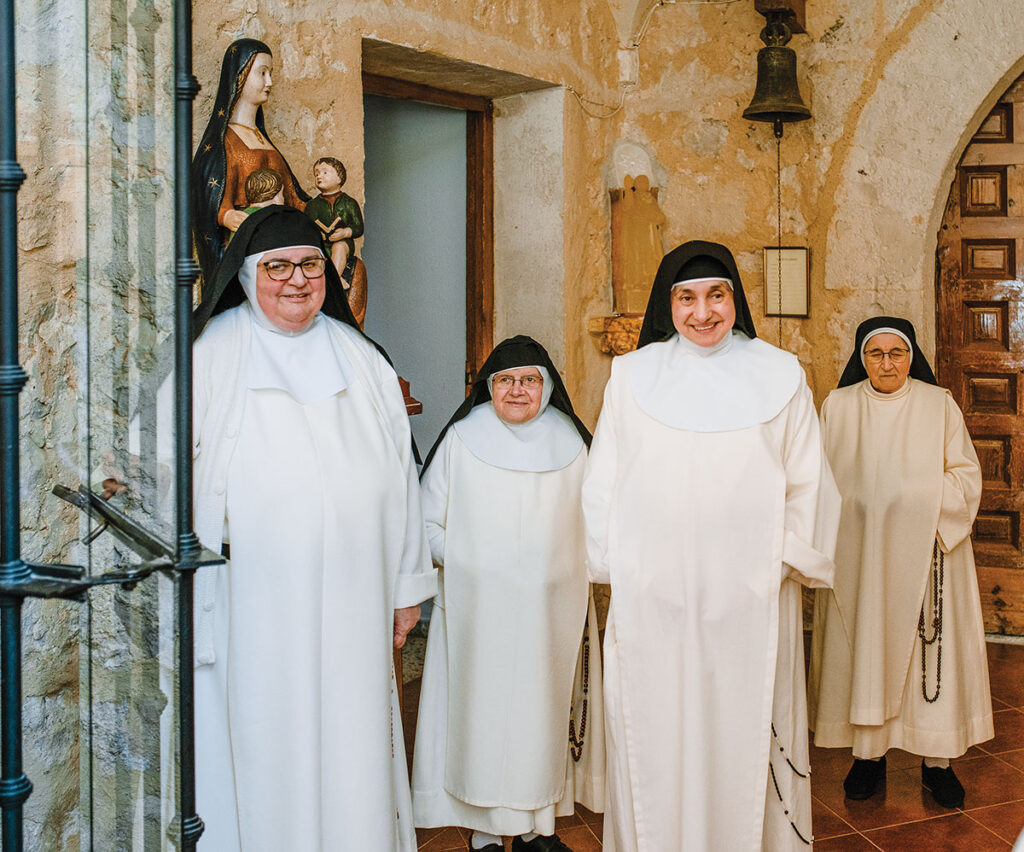
After Mass in the crypt, the pilgrims were invited to the entrance of the nearby nuns’ cloister. Six women in white Dominican habits with black veils and rosaries, faces framed by traditional white cloths called coifs, waited at an open iron gate. These contemplative Dominican nuns live austere lives of prayer and work, never leaving the monastery except for medical appointments or to care for ailing parents. Father Dominic facilitated conversation in translation from Spanish.
“We are inside the cloister physically, but our soul is with you every day,” said one sister.
Saint Dominic established houses of nuns to pray for his order, a vocation the sisters carry on today, praying together and individually from before dawn into the night. To support themselves, they bake cookies in 11 varieties, several of which they kindly gifted to the pilgrims. And “like good Dominicans,” they study.
“A Dominican without study is like a stool missing a leg,” the sister said.
When Father Dominic translated the sister’s counsel, “Never cease to be surprised by creation nor to know that there is something much greater than us,” she waved her finger.
“Not something. Someone,” she corrected.
As the pilgrims prepared to leave, it was suggested that the American Dominicans pose for a photo with the Spanish nuns — “a family portrait.” Immediately after, a nun asked if they could take a photo with the students as well.
“We pray every day for young people like you. It is a great joy to meet you,” she said.
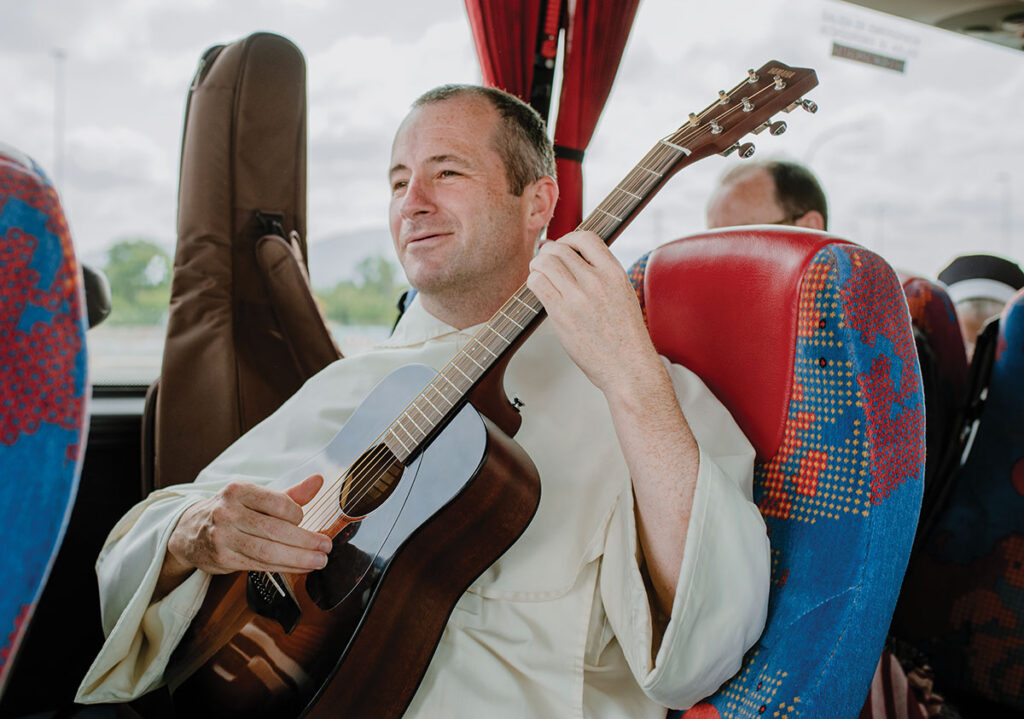
The next morning, the pilgrims boarded the bus from Caleruega for the walled medieval city of Osma, site of the cathedral where Dominic was a canon following his priestly ordination. A canon is a member of a community of priests attached to a particular cathedral, often living by regulations and practices known as a rule. At Osma, Dominic lived according to the Rule of Saint Augustine. To this day, Dominicans base their community life on Augustine’s rule.
That evening, the pilgrims hiked a trail along a gorge and through fields of wheat to Domingo de Silos, site of a Benedictine monastery where Dominic’s mother, Blessed Jane of Aza, prayed after dreaming of giving birth to a dog with a torch in its mouth that leapt forth and set the world ablaze. The dog and the torch, often portrayed together as in the dream, endure as symbols of the Dominican Order.
Through patches of light rain, the pilgrims walked and sang as Father Justin, a member of the musical group known as the Hillbilly Thomists, played a small guitar. They sang folk spirituals like Down to the River to Pray, casting a distinctly American sound over the Castilian countryside.
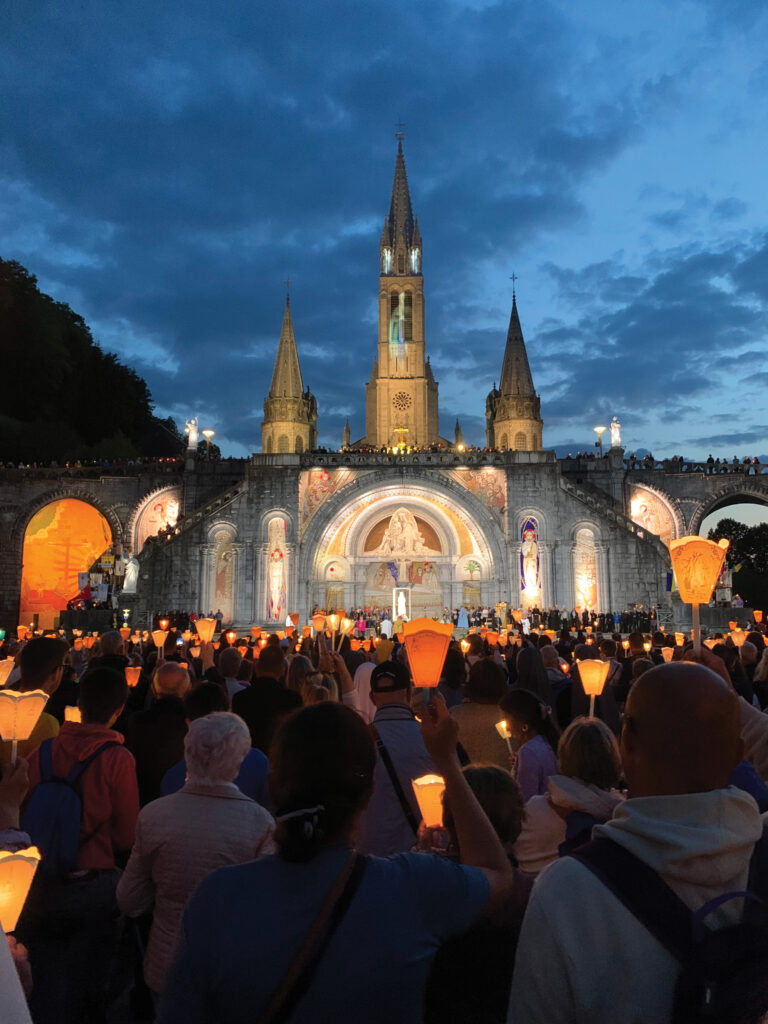
The pilgrims traveled next to Lourdes, France, stopping for a few hours in the seaside city of San Sebastián in northeastern Spain’s Basque region. On the other side of the Pyrenees Mountains, they arrived in Lourdes in time for the nightly candlelit procession through the grounds below the Basilica of the Immaculate Conception. The procession honors and prays for the intercession of Mary, mother of Jesus, who is said to have appeared 18 times to Bernadette Soubirous, a 14-year-old girl living in poverty in Lourdes, in 1858.
At the front of the procession is a statue of Our Lady of Lourdes in white and pale blue and holding a rosary of pearls, as she was described by Soubirous, who was canonized in 1933. Following behind are thousands of faithful from all parts of the world, some of the six million pilgrims who visit Lourdes each year seeking healing. From the basilica steps, dozens of volunteers pray the rosary in numerous languages, alternating tongues between each prayer. At the conclusion of each decade of the rosary, the pilgrims lift their candles and sing a verse and refrain of Immaculate Mary.
“Walking and praying and singing with thousands of pilgrims from all over the world, I thought — heaven must feel something like this,” said Liz Varous ’25, an accounting and theology major from Commack, New York. “So many different people joined together in prayer and praise.”
As the procession made its way toward the façade of the Basilica of Our Lady of the Rosary (beneath the Basilica of the Immaculate Conception), the pilgrims recognized a familiar scene in the relief above the doorway: Dominic receiving the rosary from Mary, the same episode depicted in the War Memorial Grotto on campus. Warmly illumined under a clear night sky, the vision called to mind the O Lumen prayer to Dominic the pilgrims prayed throughout the journey:
“O light of the church, teacher of truth,
Rose of patience, ivory of chastity,
You freely poured forth the waters of wisdom,
Preacher of grace, unite us with the blessed.”
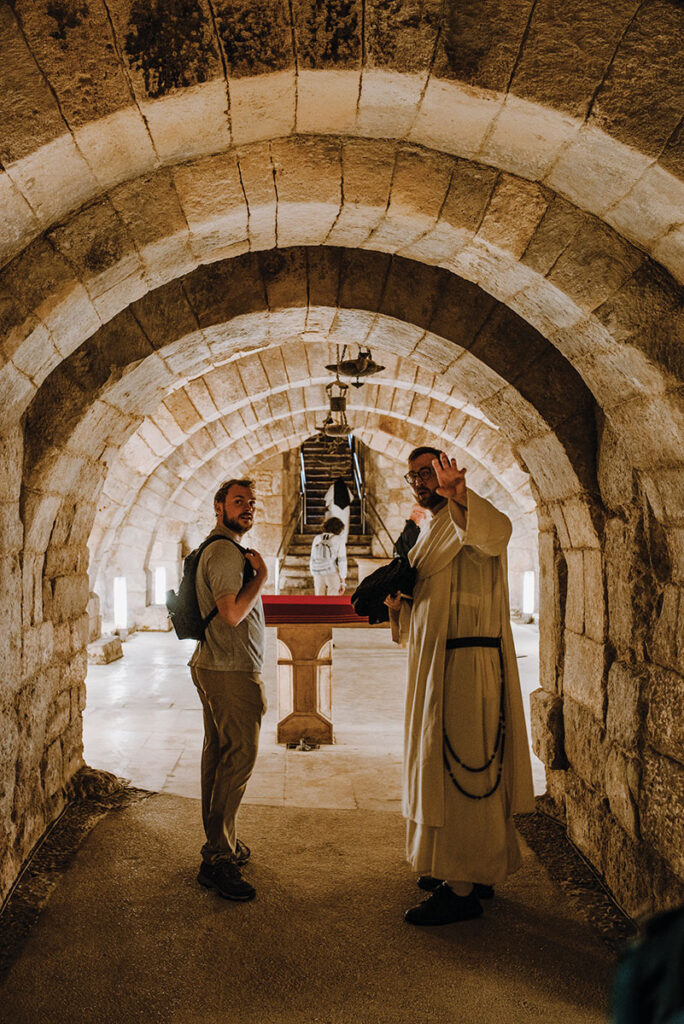
In Toulouse, today the fourth largest city in France, Dominic founded the first house of friars. The house was a gift from Peter Seila, son of a wealthy merchant. Seila offered Dominic his house and then his whole life, joining the nascent order and leaving his riches behind.
The pilgrims celebrated Mass in Toulouse above the relics of Thomas Aquinas in the Church of the Jacobins, a nickname given to the Dominican friars in medieval France, where their first house in Paris was in the Rue Saint-Jacques. On the eve of the French Revolution, the radical Jacobin faction got its name because its early meetings were held in rented space in a Dominican priory. Not long after, the revolutionary government suppressed that priory along with all monasteries and vowed religious life in France.
During communion, Gregory, a philosophy major and seminarian for the Diocese of Manchester, sang Pange Lingua Gloriosi and Adoro te Devote, eucharistic hymns composed by Aquinas.
“Singing Aquinas’ words beside his relics and before the Eucharist was moving beyond description. And though they’re only his earthly remains, I felt the pressure — he was right there,” Gregory said.
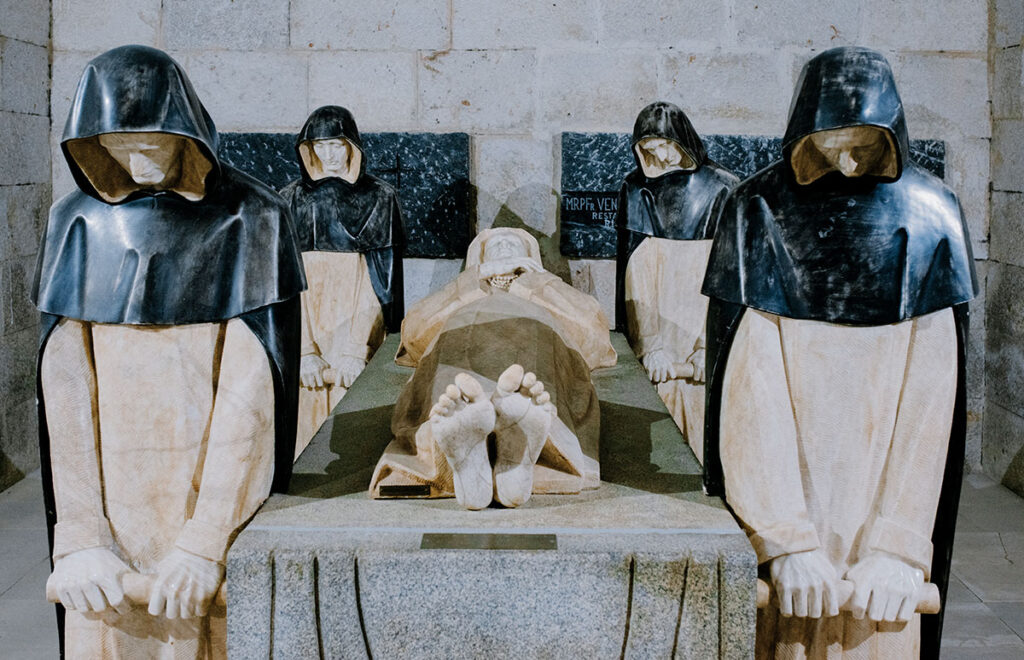
As they explored the villages and countryside of southern France where Dominic established his order and fought the Albigensian heresy (which held that matter was evil and only spirit was good), the pilgrims were guided by Rev. Renaud Silly, O.P., a Dominican friar of the Province of Toulouse and scholar of scripture and the history of the Dominican Order in France.
They visited the grave of Henri-Dominique Lacordaire, the 19th century Dominican who reestablished the order in France after its dissolution in the revolution. Father Renaud described Lacordaire’s navigation of tensions between his political liberalism and Catholic faith. Lacordaire saw Christian virtues of faith, hope, and charity as compatible with the revolutionary values of liberty, fraternity, and equality. Religious life was not merely compatible with liberal ideals; it could be an expression of them, because only the free man or woman could meaningfully and voluntarily profess religious vows.
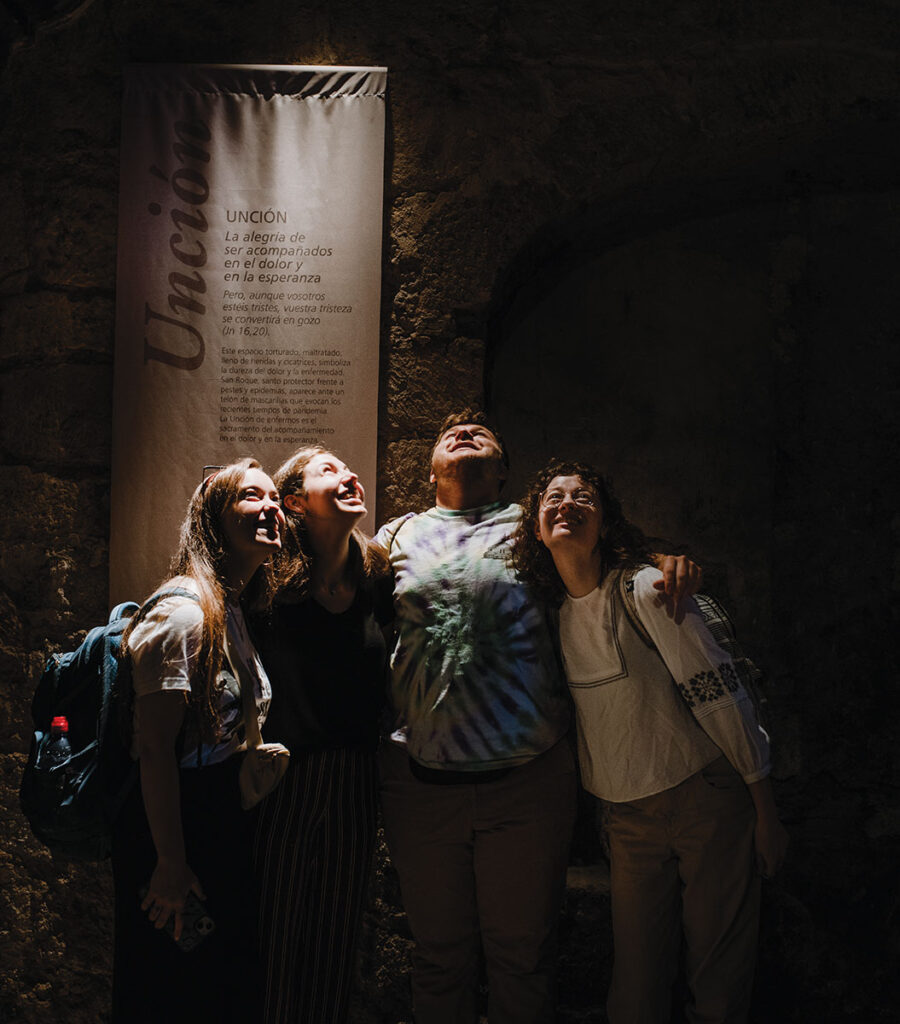
Father Renaud led the pilgrims to Prouilhe, where they met Dominican sisters at the first monastery founded by Dominic for Dominican nuns, and Fanjeaux, where they celebrated Mass in a chapel in the house where Dominic lived as a parish priest. They walked from Prouilhe through hills covered with fields of grain and wildflowers, praying the rosary as they went, and gaining elevation until they reached Fanjeaux. It was over these hills that Dominic experienced a vision of a ball of flame descending in the night sky and hovering over Prouilhe below.
As they climbed, a vision of their own unfolded. Days before, a nun in Caleruega had told the pilgrims, “When you see the vast expanse of the country, call to mind the great expanse of Dominic’s love, the boundlessness of God’s love. Never close your eyes to this.”
Walking in Dominic’s footsteps and standing where he stood, the pilgrims took in what Dominic’s eyes saw. They prayed that by sharing this vision, their spiritual vision might be renewed and deepened — the hope of the pilgrimage from the beginning.
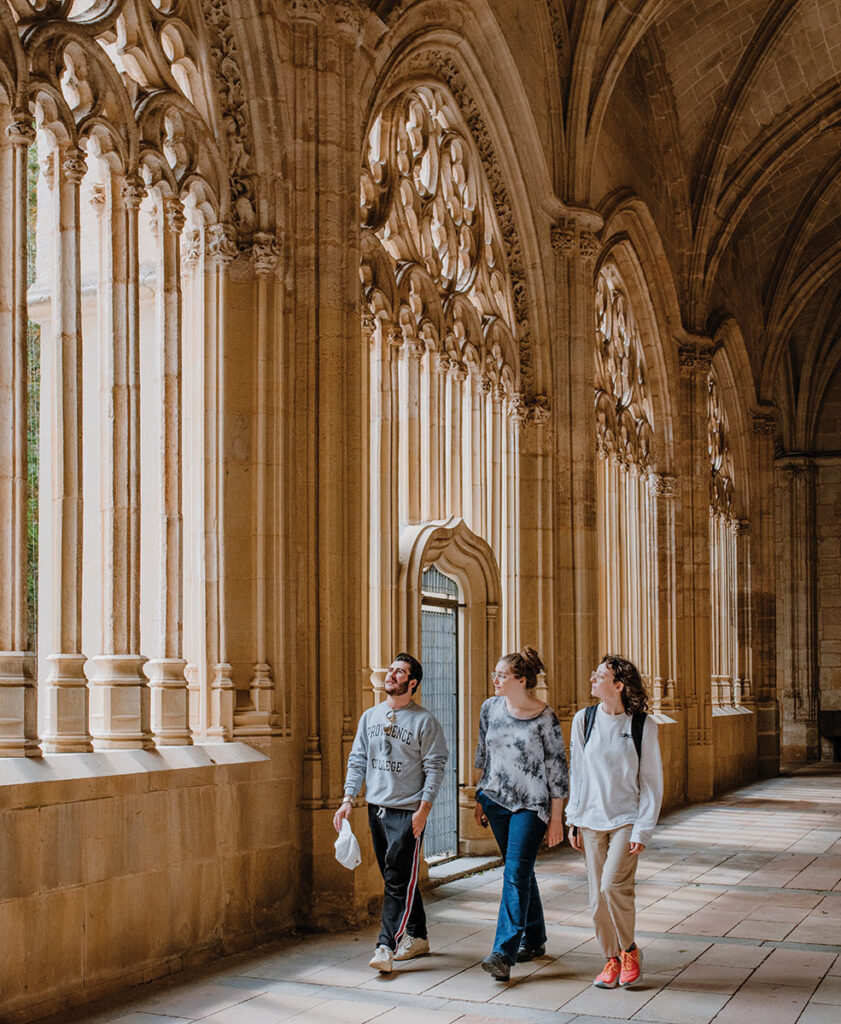
On the Solemnity of the Assumption in August 1217, Dominic gathered his small cadre of friars in Prouilhe to announce a decision that would change their lives, the church, and the world. At Dominic’s command and over the friars’ protests, the young community would disperse abroad. They would be university students and teachers, parish priests, and missionaries of mercy. They would establish new houses and grow their ranks. Centuries later, in 1917, they would found Providence College.
“You will no longer abide in the sanctuary of Prouilhe. The world henceforth is your home … Go, therefore, into the world and teach all nations,” Dominic told his brothers.
Whether “friar” is their vocation or their mascot (or both), members of the Providence College community participate in this legacy every day.
“My prayer is that each pilgrim, inspired by Saint Dominic, embraces and shares his charism at Providence College,” said Sister Matthew Marie Cummings, O.P., clinical professor of education. “May all Friars — each of us — be grounded in Dominic’s spirit.”
A pilgrimage is a journey from one home toward a home of a different kind. The Friar pilgrims journeyed from the home they made at Providence College to the medieval home of the Dominican Order. But it was their great joy to find that in prayer, in the Eucharist, and in each other, they were at home every step of the way.
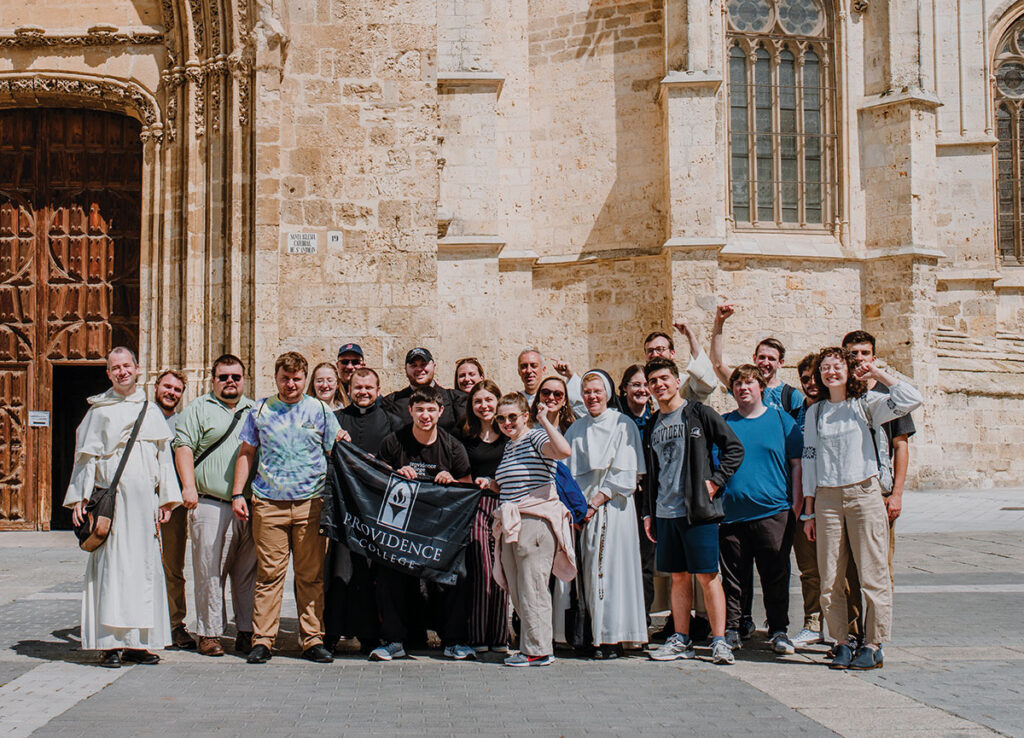
Save the date for the next trip during the Jubilee Year honoring anniversaries of the life, death, and canonization of St. Thomas Aquinas in Italy from May 27 to June 5, 2024. The pilgrimage is open to students, faculty, staff, and @provcollege_alumni. Applications are due February 27. Register now:
The Fund for Providence College aids the spiritual-led journey that many take while at PC. A gift to this fund contributes to the vitalization of faith across generations of students, faculty, and mentors — extending the PC mission far beyond the campus and its current students.





